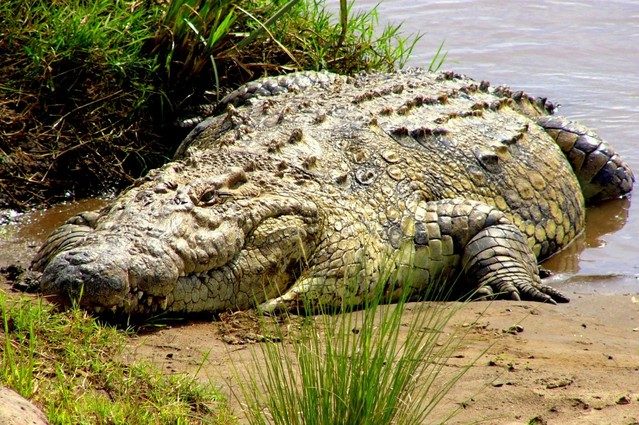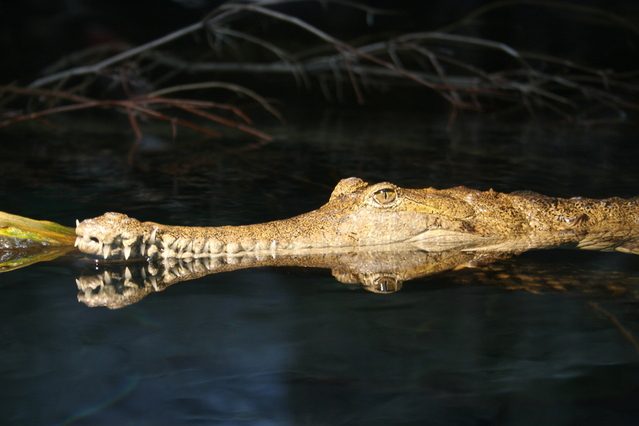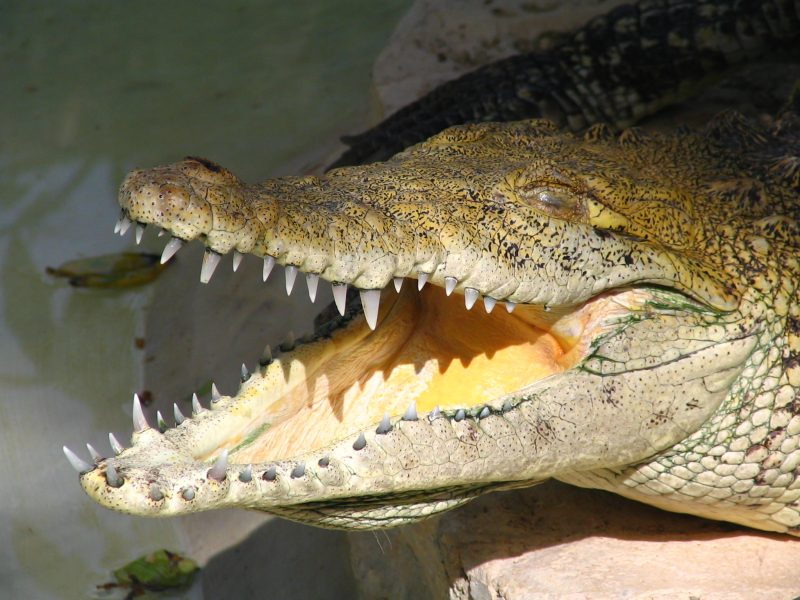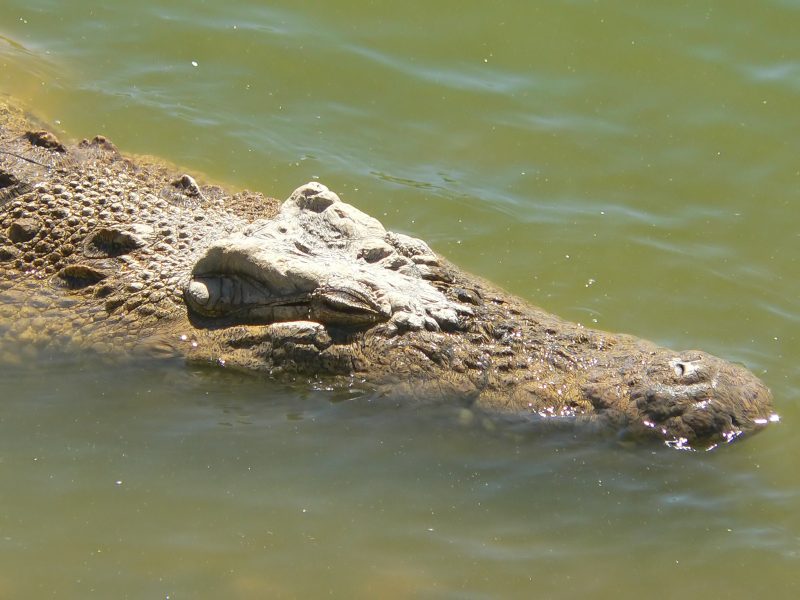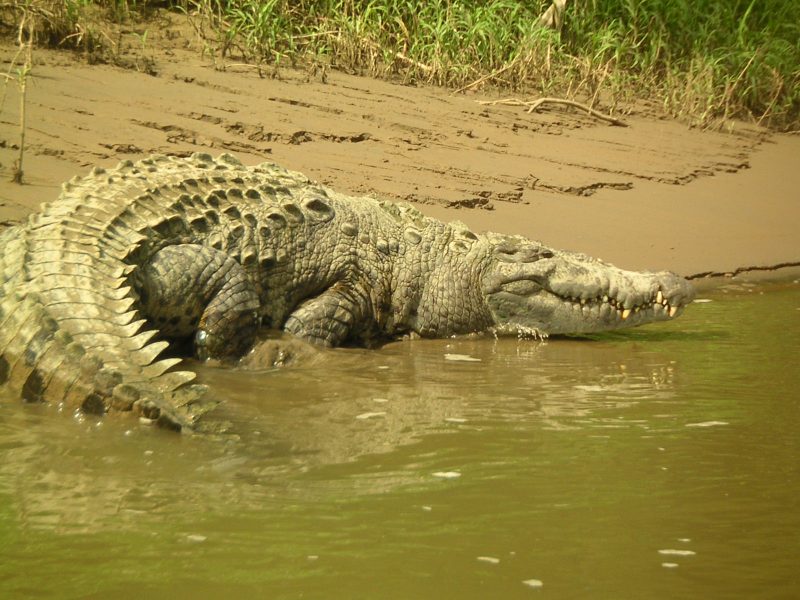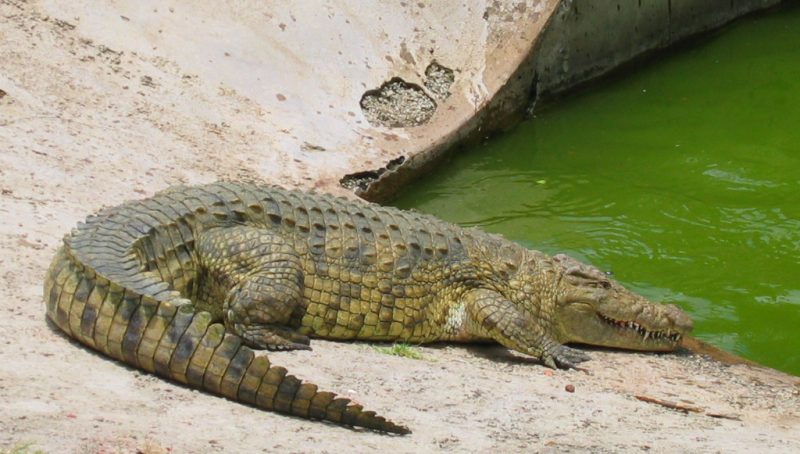Vicious But Lucrative Reptile Named Crocodile
In Kenya, the most common type of crocodile is the Nile crocodile. It weighs 410 kg and grows up to 5 meters. A Nile crocodile is not a beautiful sight. It is unsightly. But it is fascinating to watch, albeit from a distance. It has a purple under part and a bronze colored back. The flanks are yellow in color and scutes form on the tail and back. The colors change as it grows old. The Nile crocodile is widely distributed in the Southern Africa including Botswana, Namibia, Zimbabwe, and Zambia and has a healthy population in many East African countries such as Ethiopia, Somalia, Kenya, Uganda, and Tanzania. This aggressive creature named crocodile has caused numerous human-wildlife conflicts in these countries. They have attacked several hundreds of people who come to fetch water from the lake or river. Other creatures have also been victims of crocodiles.
Ambush and attack
Crocodiles have an assortment of items included in their diet such as fish including bass and catfish, reptiles like frogs, mammals such as gazelles, monkeys, antelopes and wildebeests and birds that include storks. When they bask on the riverbed, the older males, in accordance to the chain of command, occupy the best spots. When they target the prey, they hide in the water. Interestingly, crocodiles can stay under water for about half an hour when threatened and can hold their breath for up to two hours. This ability allows them to target and follow the prey for hours, days or even weeks incognito. Then the crocodile ambush and attack at the right moment jumping up into action making sure that it is swift and efficient.
The assault on the victim is ruthless. First, they sink their teeth into the flesh. Images of crocodiles give a closer look at the teeth of these reptiles. Sometimes it is possible to hear their bones breaking due to the power exerted. Then they dive into the water before surfacing momentarily still grasping flesh. By then the victim would have died a horrible death. The best time to watch this is from July to October in Maasai Mara as millions of wildebeests, zebras and gazelles cross Talek and Mara rivers when entering Kenya. The peculiar thing about crocodiles is that they can eat rotting carcasses, unlike other carnivorous animals that only eat fresh meat.
Preservation and maintenance
Greedy poachers victimized the Nile crocodiles by hunting them until the 1960s, primarily for high-quality leather, purported curative properties, and meat. It resulted in the severe depletion of the population, and the species faced extinction. But thanks to the international trade regulations and national laws, the implementation of crocodile ‘protection programs’ resulted in a resurgence of the once vulnerable reptiles. Today, due to these conservation initiatives, they are no longer threatened with extinction.
Artificial but safe
As part of the protection efforts, Kenya raises crocodiles in commercial ranches. They are artificial environments or farms where they exist safely without the threat of extermination from poachers. The Mamba Village Resort in Nairobi is one of them. Crocodiles are known as Mamba in Swahili. Hence the name. It is about 13 km from Nairobi. This resort rears 70 Nile crocodiles. Today, successful sustainable-yield programs for ranching crocodiles for their skins exist not only in Kenya but also in countries with quotas.
Commercial farming business
Kenya is one of the countries in the world suitable for commercial crocodile farming. Rearing crocodiles for trading purposes is a complex industry. It is very profitable; however, it requires a significant amount of investment for at least the first four years. The money is needed until the crocodiles are large enough for selling their meat or hides in the international markets. But even then, business success is not guaranteed. Usually larger farms are more profitable and viable than smaller farms.
Factors for success
A license is required to raise them. Building a suitable commercial environment for breeding and growing site makes it easier to get the permit. Choose an area where wild crocodiles live naturally. A construction of 800 square feet for cooler, freezer and storage and a grow-out building of 5,000 square is ideal. Run hot water pipes or electric heater coils through the concrete because crocodiles require a consistent temperature. Another important factor to consider is the manner of feeding the crocodiles. Healthy feeding is a must. Do not overfeed them as it can cause gout in crocodiles. Always try to keep the crocodiles stress free. A stressed crocodile develops brown spot disease, which creates discolored spots on their hides, and it can reduce the value of the leather. Outside noise can also create stress and agitate the crocodiles. So, minimize it by insulating the building.
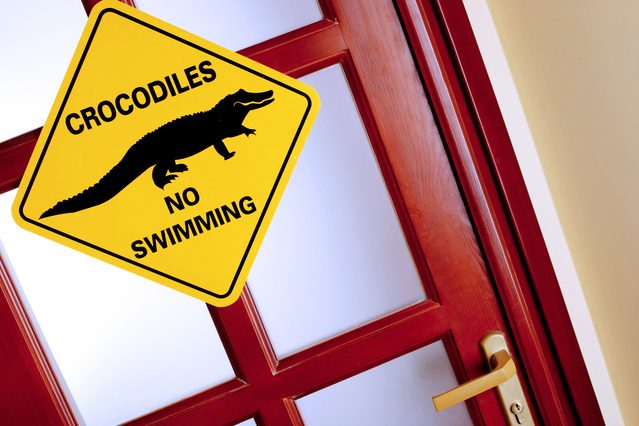
It is highly advisable that the entrepreneur volunteers in a crocodile farm for a couple of months to get a good grasp of how to run the business
Merely obtaining a commercial crocodile farming license and building the necessary infrastructure is hardly enough to make it a viable business. It needs people with special expertise and in-depth knowledge about crocodiles because caring for the reptiles is a huge part of the operations. It is highly advisable that the entrepreneur volunteers in a crocodile farm for a couple of months to get a good grasp of how to run the business. Owners of the farms are always happy and proud to share information about their rearing business.
Care and treatment
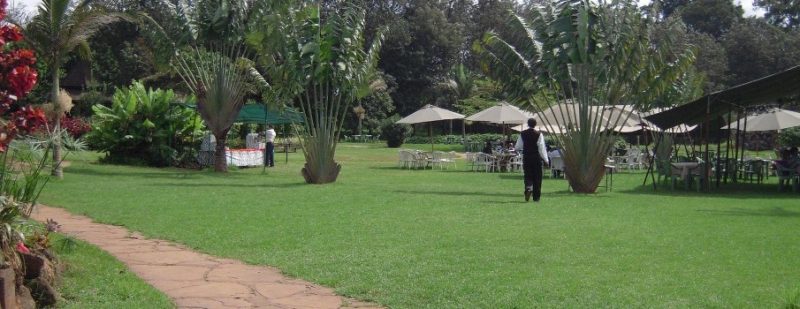
A visit to the Mamba Crocodile Farm gives a chance not only to observe the crocodiles but also learn from the caretakers about how they avoid getting caught by these sly attackers Source: Nairobi City
Crocodiles need proper care and treatment not only for the sake of the reptiles but also for the safety of the handlers. There is no such thing as a tamed crocodile. They are as nasty in captivity as they are in the wild. Their attacks are sudden and unpredicted. A visit to the Mamba Crocodile Farm gives a chance not only to observe the crocodiles but also learn from the caretakers about how they avoid getting caught by these sly attackers.
5 Frequently Asked Questions About Crocodile Farming In Kenya
To receive a colourful digibook about crocodile with videos, images and text, please fill out the following form or simply email us on safaris@safari-center.com

